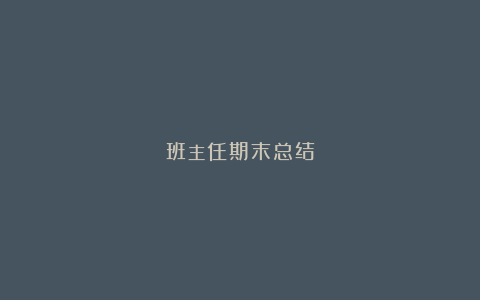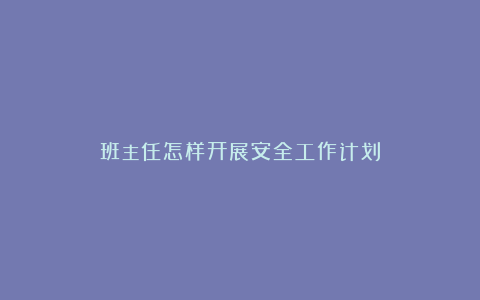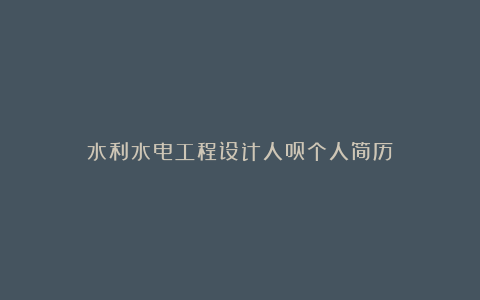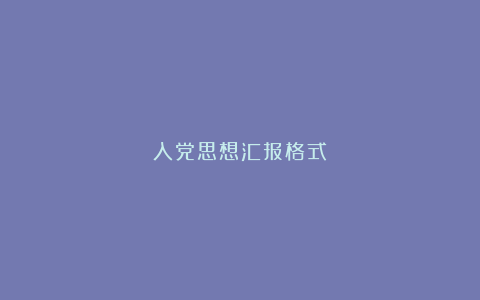天安门的英文导游词
- 文档
- 2024-07-23
- 161热度
- 0评论
下面就是小编给大家分享的天安门的英文导游词,本文共7篇,希望大家喜欢!

天安门英文导游词
Tian'anmen (the Gate of Heavenly Peace), is located in the center of Beijing. It was first built in 1417 and named Chengtianmen (the Gate of Heavenly Succession). At the end of the Ming Dynasty, it was seriously damaged by war. When it was rebuilt under the Qing in 1651, it was renamed Tian'anmen, and served as the main entrance to the Imperial City, the administrative and residential quarters for court officials and retainers. The southern sections of the Imperial City wall still stand on both sides of the Gate. The tower at the top of the gate is nine-room wide and five Croom deep. According to the Book of Changes, the two numbers nine and five, when combined, symbolize the supreme status of a sovereign. During the Ming and Qing dynasties, Tian'anmen was the place where state ceremonies took place. The most important one of them was the issuing of imperial edicts, which followed these steps:
1) The Minister of Rites would receive the edict in Taihedian (Hall of Supreme Harmony), where the Emperor was holding his court. The minister would then carry the decree on a yunpan (tray of cloud), and withdraw from the hall via Taihemen (Gate of supreme Harmony).
2) The Minister would put the tray in a miniature longting (dragon pavilion). Beneath a yellow umbrella and carry it via Wumen (Meridian Gate), to Tian'anmen Gate tower.
3) A courtier would be invested to proclaim the edict. The civil and military officials lining both sides of the gateway beneath the tower would prostrate themselves in the direction of the emperor in waiting for the decree to the proclaimed.
4) The courtier would then put the edict in a phoenix-shaped wooden box and lower it from the tower by means of a silk cord. The document would finally be carried in a similar tray of cloud under a yellow umbrella to the Ministry of Rites.
5) The edict, copied on yellow paper, would be made known to the whole country. Such a process was historically recorded as “ Imperial Edict Issued by Golden Phoenix”. During the Ming and Qing dynasties Tian'anmen was the most important passage. It was this gate that the Emperor and his retinue would go through on their way to the altars for ritual and religious activities.
On the Westside of Tian'anmen stands ZhongshanPark (Dr. Sun Yat-sen's Park), and on the east side, the Working People's Cultural Palace. The Park was formerly called Shejitan (Altar of Land and Grain), built in 1420 for offering sacrificial items to the God of Land. It was opened to the public as a park in 1914 and its name was changed in 1928 to the present one in memory of the great pioneer of the Chinese Democratic Revolution. The Working People's Cultural Palace used to be Taimiao (the Supreme Ancestral Temple), where tablets of the deceased dynastic rulers were kept.
The stream in front of Tian'anmen is called Waijinshuihe (Outer Golden River), with seven marble bridges spanning over it . Of these seven bridges, historical records say the middle one was for the exclusive use of the emperor and was accordingly called Yuluqiao (Imperial Bridge). The bridges flanking it on either side were meant for the members of the royal family and were therefore called Wanggongqiao (Royal's Bridges). Farther away on each side of the two were bridges for officials ranking above the third order and were named Pinjiqiao (ministerial Bridges). The remaining two bridges were for the use by the retinue below the third order and were called Gongshengqiao (common Bridges). They are the one in front of the Supreme Ancestral Temple to the east and the one in front of the Altar of land and Grain to the west.
Tian’anmen Rostrum
Tian’anmen( the Gate of Heavenly Peace), is located in the center of Beijing. It was first built in 1417 and named Chengtianmen( the Gate of Heavenly Succession). At the end of the Ming Dynasty, it was seriously damaged by war. When it was rebuilt under the Qing in 1651, it was renamed Tian’anmen, and served as the main entrance to the Imperial City, the administrative and residential quarters for court officials and retainers. The southern sections of the Imperial City wall still stand on both sides of the Gate. The tower at the top of the gate is nine-room wide and five Croom deep. According to the Book of Changes, the two numbers nine and five, when combined, symbolize the supreme status of a sovereign.During the Ming and Qing dynasties, Tian’anmen was the place where state ceremonies took place. The most important one of them was the issuing of imperial edicts, which followed these steps:
1) The Minister of Rites would receive the edict in Taihedian( Hall of Supreme Harmony), where the Emperor was holding his court. The minister would then carry the decree on a yunpan( tray of cloud), and withdraw from the hall via Taihemen( Gate of supreme Harmony)
2) The Minister would put the tray in a miniature longting( dragon pavilion). Beneath a yellow umbrella and carry it via Wumen( Meridian Gate), to Tian’anmen Gate tower.
3) A courtier would be invested to proclaim the edict. The civil and military officials lining both sides of the gateway beneath the tower would prostrate themselves in the direction of the emperor in waiting for the decree to the proclaimed.
4) The courtier would then put the edict in a phoenix-shaped wooden box and lower it from the tower by means of a silk cord. The document would finally be carried in a similar tray of cloud under a yellow umbrella to the Ministry of Rites.
5) The edict, copied on yellow paper, would be made known to the whole country.
Such a process was historically recorded as “ Imperial Edict Issued by Golden Phoenix”.During the Ming and Qing dynasties Tian’anmen was the most important passage. It was this gate that the Emperor and his retinue would go through on their way to the altars for ritual and religious activities.
On the Westside of Tian’anmen stands ZhongshanPark( Dr. Sun Yat-sen’s Park), and on the east side, the Working People’s Cultural Palave. The Park was formerly called Shejitan( Altar of Land and Grain), built in 1420 for offering sacrificial items to the God of Land. It was opened to the public as a park in 1914 and its name was changed in 1928 to the present one in memory of the great pioneer of the Chinese Democratic Revolution.The Working People’s Cultural Palace used to be Taimiao( the Supreme Ancestral Temple), where tablets of the deceased dynastic rulers were kept.
The stream in front of Tian’anmen is called Waijinshuihe( Outer Golden River),with seven marble bridges spanning over it . Of these seven bridges,historical records say the middle one was for the exclusive use of the emperor and was accordingly called Yuluqiao( Imperial Bridge). The bridges flanking it on either side were meant for the members of the royal family and were therefore called Wanggongqiao( Royal’s Bridges). Farther away on each side of the two were bridges for officials ranking above the third order and were named Pinjiqiao( ministerial Bridges). The remaining two bridges were for the use by the retinue below the third order and wre called Gongshengqiao( common Bridges). They anr the one in front of the Supreme Ancestral Temple to the east and the one in front of the Altar of land and Grain to the west.
The two stone lions by the Gate of Tian’anmen, one on each side were meant as sentries. They gaze toward the middle axis, guarding the emperor’s walkway. In front of the gate stands a pair of marble columns called Huabiao. They are elaborately cut in bas-relief following the pattern of a legendary dragon. Behind the gate stands another pair of similar columns. The story of Huabiao may be traced to a couple of sources. One of the versions accredits its invention to one of the Chinese sage kings named Yao, who was said to have set up a wooden pillar in order to allow the ordinary people to expose evil-doers, hence it was originally called a slander pillar. Later it ws reduced to a signpost, and now it serves as an ornament.
北京-天安门英文导游词
1) The Minister of Rites would receive the edict in Taihedian (Hall of Supreme Harmony), where the Emperor was holding his court. The minister would then carry the decree on a yunpan (tray of cloud), and withdraw from the hall via Taihemen (Gate of supreme Harmony)
2) The Minister would put the tray in a miniature longting (dragon pavilion). Beneath a yellow umbrella and carry it via Wumen (Meridian Gate), to Tian'anmen Gate tower. 3) A courtier would be invested to proclaim the edict. The civil and military officials lining both sides of the gateway beneath the tower would prostrate themselves in the direction of the emperor in waiting for the decree to the proclaimed.
4) The courtier would then put the edict in a phoenix-shaped wooden box and lower it from the tower by means of a silk cord. The document would finally be carried in a similar tray of cloud under a yellow umbrella to the Ministry of Rites.
5) The edict, copied on yellow paper, would be made known to the whole country. Such a process was historically recorded as “ Imperial Edict Issued by Golden Phoenix”. During the Ming and Qing dynasties Tian'anmen was the most important passage. It was this gate that the Emperor and his retinue would go through on their way to the altars for ritual and religious activities.
On the Westside of Tian'anmen stands ZhongshanPark (Dr. Sun Yat-sen's Park), and on the east side, the Working People's Cultural Palace. The Park was formerly called Shejitan (Altar of Land and Grain), built in 1420 for offering sacrificial items to the God of Land. It was opened to the public as a park in 1914 and its name was changed in 1928 to the present one in memory of the great pioneer of the Chinese Democratic Revolution. The Working People's Cultural Palace used to be Taimiao (the Supreme Ancestral Temple), where tablets of the deceased dynastic rulers were kept.
The stream in front of Tian'anmen is called Waijinshuihe (Outer Golden River), with seven marble bridges spanning over it . Of these seven bridges, historical records say the middle one was for the exclusive use of the emperor and was accordingly called Yuluqiao (Imperial Bridge). The bridges flanking it on either side were meant for the members of the royal family and were therefore called Wanggongqiao (Royal's Bridges). Farther away on each side of the two were bridges for officials ranking above the third order and were named Pinjiqiao (ministerial Bridges). The remaining two bridges were for the use by the retinue below the third order and were called Gongshengqiao (common Bridges). They are the one in front of the Supreme Ancestral Temple to the east and the one in front of the Altar of land and Grain to the west.
本作文共4页,当前在第1页 1 2 3 4
Tian'anmen Rostrum and Square during the Ming and Qing Dynasties
Ladies and gentlemen:
We will visit Tian'anmen Rostrum and square. First, please follow me to see the Tian'anmen Rostrum.
Tian'anmen or the Gate of Heavenly Peace is located in the center of Beijing. It was first built in 1417 and was originally called the Gate of Heavenly Succession, which served as the main entrance to the main entrance to the former Imperial City. At the end of the Ming dynasty in 1644, it was seriously damaged in a war. When it was rebuilt in 1651 in the Qing dynasty, the name was changed to Tian'anmen.
Tian'anmen Rostrum is 34. 7meters high with glistering yellow glazed tiles on the roof. Chairman Mao's portrait is hung above the central entrance; there are two slogans on each side. (One is:“Long live the Peopele's Republic of China.”The other one is:“Long Live the Great Unify of the People of Word.”
It has five passages, during the Ming and Qing dynasties; the passage in the middle was especially reserved of the emperor himself. The emperor went through the central passage on the way to the altars and temples for ritual and some other religious activities.
During the Ming and Qing dynasties, Tian'anmen Rostrum was the place where the important state ceremonies took place, the most famous “Imperial Edict Issused by Golden Phoenix” was held on the tower.
In front of the Tian'anmen Rostrum is Outer Golden River. Spanning over the Golden River are seven arched stone bridges, knows the Golden Water Bridges. (The middle one was for the emperor only so it was called Imperial Bridge. The two bridges on each side were used by royal family members; they were called Royal's Bridges. The two bridges farther out were Ranking Bridges for the civil and military officials above the third rank. The remaining two bridges in front of the Zhongshan Park to the west and the Working People's Cultural Bridges.)
The two pairs of stone lions by the Gate of Tian'anmen served as guardians in the old days. A pair of marble columns standing in front of Tian'anmen Rostrum is made of white marble, sculptured with dragon design. Behind the rostrum stands another pair of marble columns. In Chinese they are called “Huabiao”。 On the top of the Huabiao, a stone mythical animal squatting on the top is called “Hou”。 The pair of animals facing south were given the name “Wangjungui”, in English:“Expecting the emperor's coming back”。(which means whenever the emperor stayed too long outside , it would warn the emperor should not to stay away too long outside. Hurry back and take care of the state affairs, we were looking forward to your return.) Another pair of stone animals on Huabiao facing to the Forbidden City was given the name “Wangjunchu”, in English “Expecting the emperor's going out”。 (Which means the emperor not to spend the luxury life in the imperial palace, he should come out and get to know the sufferings of the common people.)
Tian'anmen Square is situated south of Tian'anmen Rostrum, 880 meters long from north to south and 500 meters wide from east to west, with a total area of 44 hectares. Tiananmen Square is the largest city center square in the world. The square has witnessed many historical events, such as :“The December 9th Student'Movement” in 1935 and the ceremony of the founding of the People's Republic of China on October 1st in 1949.
During the Ming and Qing Dynasties, Tian'anmen Square used to be a “T” shaped square. It was surrounded by a red wall. At that time, the offices, located on the west, were for the military officers and the offices for the civil officials were on the east. In the early days of the Ming Dynasty, a gate was built right on the present side of the Chairman Mao's Mausoleum and it was called “the Gate of Great Ming”,served as the south gate of the imperial city. It was changed into “the Gate of Great Qing” in the Qing Dynasty. And it was again renamed as “the Gate of China” in 1912. During the Ming and Qing dynasties, there were two more gates built on Chang'an Avenue. The one on the west was called “the Right Gate of Chang'an Avenue” which was for the criminals, also called “Tiger Gate”。 The gate on the east was called “the Left Gate of Chang'an Avenue” for those scholars who passed the Palace Examination, it was also called “Dragon Gate”。 Along the central axis in the center of the square was the Imperial Road. The Thousand-step corridor on both sides of the road and some parts at the Chang'an Avenue, respectively towards Tiger Gate and Dragon Gate, altogether 288 rooms.
Zheng Yang Gate is located at the south part of the square which also knows as the “Front Gate ”。 It was one of the nine city gates in the old city of Beijing and was first built in 1420 in the early Ming Dynasty. It was renovated and rebuilt several times during the Ming and Qing Dynasties. The tower in front of the gate is the Arrow Tower(Jianlou)。 Originally, the gate and the tower were connected by two walls, on both sides which look like a jar shape, so it was also called Jar City.
The space between the Front City Gate and the Gate of Great Ming was a small square with the streets designed in a “cross” pattern, so the square was nicknamed “Chess-board Street”。 There used to be some temples built for people to worship. During the Ming and Qing Dynasty the common people were not allowed to walk through the Imperial City. So the “Chess-board” street became an important line of communication and thoroughfare for the residents pass from east to west.
This is the introduction of Tian'anmen Rostrum and Tian'anmen Square during the past time. I hope it can help you to have a better understanding of this place. Thank you.
Tian'anmen(the Gate of Heavenly Peace), is located in the center of Beijing. It was first built in 1417 and named Chengtianmen(the Gate of Heavenly Succession)。 At the end of the Ming Dynasty, it was seriously damaged by war. When it was rebuilt under the Qing in 1651, it was renamed Tian'anmen,and served as the main entrance to the Imperial City,the administrative and residential quarters for court officials and retainers.
The southern sections of the Imperial City wall still stand on both sides of the Gate. The tower at the top of the gate is nine-room wide and five room deep. According to the Book of Changes,the two numbers nine and five,when combined,symbolize the supreme status of a sovereign. During the Ming and Qing dynasties, Tian'anmen was the place where state ceremonies took place. The most important one of them was the issuing of imperial edicts, which followed these steps:1) The Minister of Rites would receive the edict in Taihedian(Hall of Supreme Harmony),where the Emperor was holding his court. The minister would then carry the decree on a yunpan(tray of cloud),and withdraw from the hall via Taihemen(Gate of supreme Harmony)2)The Minister would put the tray in a miniature longting(dragon pavilion)。
Beneath a yellow umbrella and carry it via Wumen(Meridian Gate),to Tian'anmen Gate tower. 3)A courtier would be invested to proclaim the edict. The civil and military officials lining both sides of the gateway beneath the tower would prostrate themselves in the direction of the emperor in waiting for the decree to the proclaimed.3)The courtier would then put the edict in a phoenix-shaped wooden box and lower it from the tower by means of a silk cord. The document would finally be carried in a similar tray of cloud under a yellow umbrella to the Ministry of Rites.4)The edict,copied on yellow paper,would be made known to the whole country. Such a process was historically recorded as “ Imperial Edict Issued by Golden Phoenix”.
During the Ming and Qing dynasties Tian'anmen was the most important passage. It was this gate that the Emperor and his retinue would go through on their way to the altars for ritual and religious activities.On the Westside of Tian'anmen stands ZhongshanPark(Dr. Sun Yat-sen's Park),and on the east side,the Working People's Cultural Palace.
The Park was formerly called Shejitan(Altar of Land and Grain),built in 1420 for offering sacrificial items to the God of Land. It was opened to the public as a park in 1914 and its name was changed in 1928 to the present one in memory of the great pioneer of the Chinese Democratic Revolution.
The Working People's Cultural Palace used to be Taimiao(the Supreme Ancestral Temple),where tablets of the deceased dynastic rulers were kept.The stream in front of Tian'anmen is called Waijinshuihe(Outer Golden River),with seven marble bridges spanning over it . Of these seven bridges,historical records say the middle one was for the exclusive use of the emperor and was accordingly called Yuluqiao(Imperial Bridge)。 The bridges flanking it on either side were meant for the members of the royal family and were therefore called Wanggongqiao(Royal's Bridges)。
Farther away on each side of the two were bridges for officials ranking above the third order and were named Pinjiqiao(ministerial Bridges)。The remaining two bridges were for the use by the retinue below the third order and were called Gongshengqiao(common Bridges)。
They are the one in front of the Supreme Ancestral Temple to the east and the one in front of the Altar of land and Grain to the west.The two stone lions by the Gate of Tian'anmen,one on each side were meant as sentries. They gaze toward the middle axis,guarding the emperor's walkway. In front of the gate stands a pair of marble columns called Huabiao.
They are elaborately cut in bas-relief following the pattern of a legendary dragon. Behind the gate stands another pair of similar columns. The story of Huabiao may be traced to a couple of sources. One of the versions accredits its invention to one of the Chinese sage kings named Yao,who was said to have set up a wooden pillar in order to allow the ordinary people to expose evil-doers, hence it was originally called a slander pillar. Later it was reduced to a signpost,and now it serves as an ornament.The beast sitting on the top of the column is called “hou”,a legendary animal,which is said to have been a watcher of an emperor's behaviour. He was doing such duties as warning the emperor against staying too long outside the palace or indulging in pleasure and urging him to go to the people for their complaints or return in due time. Therefore,the two pairs of beasts were given the names “Wangjunhui”(Expecting the emperor's coming back) and “wangjunchu”(Expecting the emperor's going out) respectively。
Tian'anmen (the Gate of Heavenly Peace), is located in the center of Beijing。 It was first built in 1417 and named Chengtianmen (the Gate of Heavenly Succession)。 At the end of the Ming Dynasty, it was seriously damaged by war。 When it was rebuilt under the Qing in 1651, it was renamed Tian'anmen, and served as the main entrance to the Imperial City, the administrative and residential quarters for court officials and retainers。 The southern sections of the Imperial City wall still stand on both sides of the Gate。 The tower at the top of the gate is nine-room wide and five –room deep。 According to the Book of Changes, the two numbers nine and five, when combined, symbolize the supreme status of a sovereign。 During the Ming and Qing dynasties, Tian'anmen was the place where state ceremonies took place。 The most important one of them was the issuing of imperial edicts, which followed these steps:
1) The Minister of Rites would receive the edict in Taihedian (Hall of Supreme Harmony), where the Emperor was holding his court。 The minister would then carry the decree on a yunpan (tray of cloud), and withdraw from the hall via Taihemen (Gate of supreme Harmony)
2) The Minister would put the tray in a miniature longting (dragon pavilion)。 Beneath a yellow umbrella and carry it via Wumen (Meridian Gate), to Tian'anmen Gate tower。 3) A courtier would be invested to proclaim the edict。 The civil and military officials lining both sides of the gateway beneath the tower would prostrate themselves in the direction of the emperor in waiting for the decree to the proclaimed。
4) The courtier would then put the edict in a phoenix-shaped wooden box and lower it from the tower by means of a silk cord。 The document would finally be carried in a similar tray of cloud under a yellow umbrella to the Ministry of Rites。
5) The edict, copied on yellow paper, would be made known to the whole country。 Such a process was historically recorded as “ Imperial Edict Issued by Golden Phoenix”。 During the Ming and Qing dynasties Tian'anmen was the most important passage。 It was this gate that the Emperor and his retinue would go through on their way to the altars for ritual and religious activities。
On the Westside of Tian'anmen stands ZhongshanPark (Dr。 Sun Yat-sen's Park), and on the east side, the Working People's Cultural Palace。 The Park was formerly called Shejitan (Altar of Land and Grain), built in 1420 for offering sacrificial items to the God of Land。 It was opened to the public as a park in 1914 and its name was changed in 1928 to the present one in memory of the great pioneer of the Chinese Democratic Revolution。 The Working People's Cultural Palace used to be Taimiao (the Supreme Ancestral Temple), where tablets of the deceased dynastic rulers were kept。
The stream in front of Tian'anmen is called Waijinshuihe (Outer Golden River), with seven marble bridges spanning over it 。 Of these seven bridges, historical records say the middle one was for the exclusive use of the emperor and was accordingly called Yuluqiao (Imperial Bridge)。 The bridges flanking it on either side were meant for the members of the royal family and were therefore called Wanggongqiao (Royal's Bridges)。 Farther away on each side of the two were bridges for officials ranking above the third order and were named Pinjiqiao (ministerial Bridges)。 The remaining two bridges were for the use by the retinue below the third order and were called Gongshengqiao (common Bridges)。 They are the one in front of the Supreme Ancestral Temple to the east and the one in front of the Altar of land and Grain to the west。
Tian'anmen Rostrum and Square today
Tian'anmen Square is situated of Tian'anmen Rostrum , 880 meters long from north to south and 500 meters wide from east to west, with a total area of 44 hectares (109acres)。 It can hold half a million people, but once it accommodated city center square in the world. The square has witnessed many historical events, such as :“The May 4th movement in 1919”,“The March 18th Massacre” in 1926 and “The December 9th students' Movement” in 1935.
Tian'anmen square was enlarged in the 1950s and some important buildings were also built on the square. Along the central axis from north to south, first we can see the National Flagpole. It is made of 4 seamless steel tubes, 32. 6meters high, and 7 tons in weight, which will not get rusty for 20 years. The national flag with five yellow stars flutters on the flagpole. Since May 1st in 1991, we have the flag-raising ceremony every day at sunrise in the morning and we also have the flag-lowering ceremony every day at sunset. On the 1st day of the month and other important dates for national ceremonies, we hold a special holiday ceremony. During the ceremony, there are 36 guards of honor with 60 guards of military band behind, making up 96 guards altogether, march along the north-south axis towards the flagpole. The number 96 signifies the territory of China, which has 9.6 million square kilometers in area. While for other events, an ordinary ceremony is held by a tape recording.
The Monument to the People's Heroes stands in the center of the square. It was built in 1952 and was completed in 1958. In order to commemorate the people's heroes who laid down their lives in the course of the Chinese revolution and the Chinese liberation. It is 38 meters high with 17,000 pieces of granite and white marble on the base. The obelisk is 14.7 meters high that consists of 413 pieces of granite, and 2.9 meters wide, 1meter thick, 60tons in weight.
On the front side of the monument, there is an engraved inscription in Chinese characters written by our late Chairman __ : “Eternal Glory to the People's Heroes!” On the back of monument is an article also written by Chairman Mao. But the calligraphy was written by our late Premier Zhou enlai. Under the obelisk are the two-layered bases of the monument. The bottom layer is inlaid with ten pieces of white marble relieves.
Chairman Mao's Mausoleum located south of the Monument to the People's Heroes, it was built in November 1976 and was completed in May 1977. It was officially opened to the public on September 9th, 1977, just one year after his death. It occupies a total floor space of 28,00square meters. There are three main halls inside the mausoleum.
On the west of the square is the Great Hall of the People , it was built in 1958 and was completed in1958. It occupies a total floor space of over 170,000 square meters. The highest point of this building is 46.5 meters high in the center with a big national emblem hanging in the middle. The building consists of three parts: the 10,000-seat Grand Auditorium, the Banquet Hall with 5,000 Seating capacity and the Offices for the Standing Committee of the National people's Congress and thirty-four Reception Halls.
On the east of the square is the National museum which formerly called the Museum of the Chinese History and the Museum of the Chinese Revolution. 300,000 pieces of Chinese history form 1.7million years ago to 1919. The Museum of the Chinese Revolution covers the period from 1919 to 1949. The present name was given in 2003.
Today, Tian'anmen Square attracts millions of people from all over the world every year. So the square is always full of tourists who are busy taking pictures. Today, Tian'anmen Square is a place for celebrations during important festive occasions and some important state celebrations.
★
★
★
★
★
★
★
★
★
★



